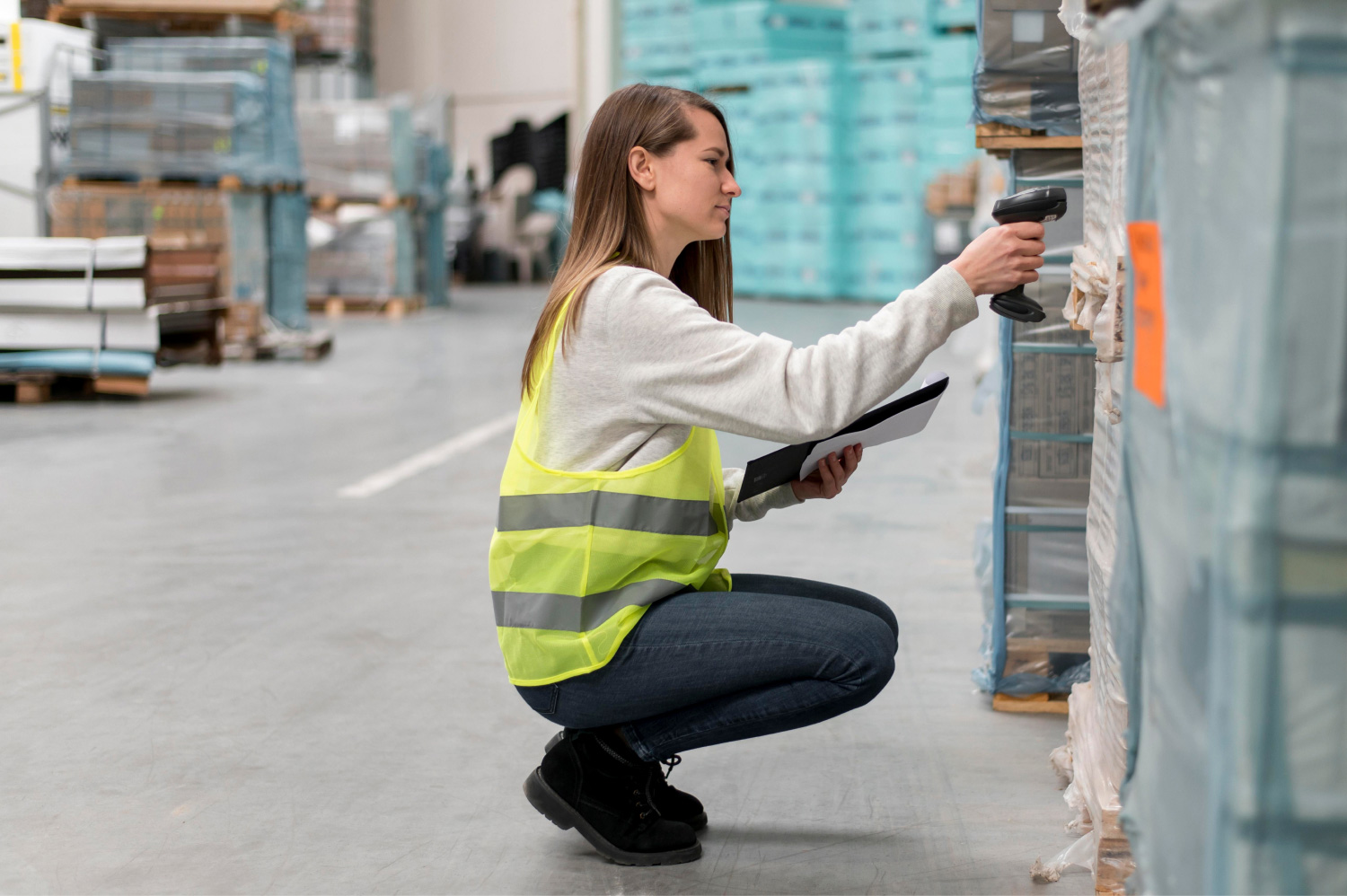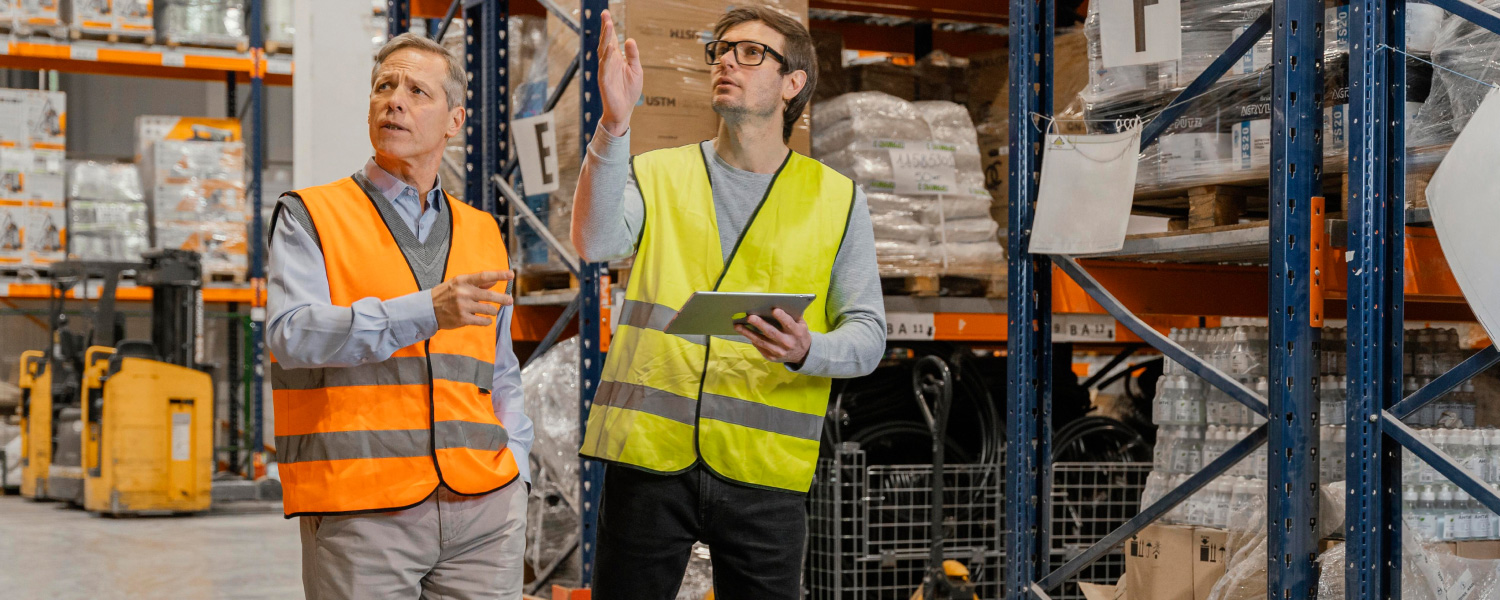Did you know that working in a warehouse ranks as the third most dangerous job, right after firefighters and police officers?
This surprising fact from a recent Forbes survey really highlights the importance of warehouse safety.
With all the heavy machinery and non-stop activity, warehouses can be risky. That’s why beefing up warehouse safety isn’t just a good idea—it’s crucial.
As more businesses use these spaces for storing and shipping goods, keeping them safe is super important.
By bringing in advanced warehouse safety measures, like AI technology, we can make a big difference.
In this blog, we’re going to look at how AI is changing the game by improving safety protocols in warehouses, making them safer and helping things run more smoothly.
Let’s get into how AI is making a real impact on warehouse safety.
Common Warehouse Safety Risks
When we think about a safety warehouse, the idea is to create a space that’s secure and efficient. But even in the most well-managed warehouses, there are common safety risks that can pop up.
Recognizing and addressing these risks is key to maintaining a safety warehouse environment where accidents are rare, and workers feel secure.
Here are three common warehouse safety risks:
1. Slips, Trips, and Falls
These are some of the most common accidents in warehouses.
Spilled liquids, uneven floor surfaces, or cluttered walkways can easily lead to a slip or trip. Keeping floors clean and clear of debris is essential for preventing these mishaps.
2. Forklift Accidents
According to the British Safety Council, approximately 1,300 workers are hospitalized each year due to severe injuries sustained in forklift accidents.
These incidents emphasize the need for rigorous training and strict adherence to safety protocols to minimize such occurrences in busy warehouse environments.
3. Improper Lifting Techniques
Lifting heavy items is a daily task in many warehouses and doing it incorrectly can lead to serious injuries.
Back strains and other musculoskeletal injuries are common but can be minimized with training in proper lifting techniques and the use of appropriate lifting aids.
Addressing these risks with the right strategies and tools can significantly improve the safety and functionality of any warehouse.
6 Smart Warehouse Safety Rules with Artificial Intelligence

Keeping a warehouse safe is a big job, and sticking to warehouse safety rules is crucial. But what if we could make following these rules even easier and more effective? That’s where Artificial Intelligence (AI) comes in.
AI can transform traditional safety measures into something smarter, helping to prevent accidents before they happen and ensuring that everyone stays safe on the job.
Now we’ll check out six innovative ways to apply AI technologies to boost adherence to warehouse safety rules.
1. Real-time AI Monitoring
Artificial Intelligence (AI) in warehouses isn’t just about efficiency—it’s a game-changer for safety too.
AI-equipped cameras and sensors provide real-time monitoring, allowing for a vigilant eye on the movements of both people and machinery.
This proactive approach helps in identifying and mitigating potential hazards before they lead to incidents.
Here’s how AI is making warehouses safer:
- Hazard Detection: AI quickly spots potential safety risks, like blocked aisles or improper equipment use, allowing for immediate action to prevent accidents.
- Access Control: AI systems monitor who comes in and out of sensitive areas, ensuring only authorized personnel are present where they need to be.
- Compliance Monitoring: AI continuously checks that all safety protocols are being followed, from gear compliance to correct forklift operations, minimizing the risk of workplace injuries.
AI’s ability to watch over and analyze numerous elements in real-time ensures a higher standard of safety, making it an invaluable tool in modern warehouse operations.
2. Safety Standards Compliance
Ever wondered how technology can make warehouse safety rules easier to follow? AI is improving the way we manage and enforce safety standards in warehouses.
AI systems can automatically keep an eye on things that make sure everyone is sticking to the safety playbook.
Here’s how AI can help keep everything in check:
- Automated Machinery Maintenance: AI tools can keep track of when machines need a tune-up, helping to prevent breakdowns and accidents.
- Environment Monitoring: AI can continuously check things like temperature and humidity to make sure conditions stay safe for both workers and stored goods.
- Regular Safety Drills: With AI, you can ensure that safety drills happen on schedule, keeping preparedness on point and everyone ready for emergencies.
By integrating AI, warehouses can not only meet but exceed safety standards, avoiding fines and keeping operations smooth and safe.
3. Predictive Maintenance
Slips and trips are among the most common causes of injuries in warehouse environments, often due to poor housekeeping or mismanaged inventory.
Find out how AI is stepping up to tackle these challenges:
- Smart Space Allocation: During busy times, deliveries might not get stored right away. AI can help designate and monitor temporary storage areas that don’t block walkways, keeping paths clear and safe for walking.
- Continuous Surveillance: AI systems are always on guard, identifying potential hazards in storage areas to ensure that no one takes risky shortcuts through these zones.
- Advanced Detection Capabilities: Detecting slippery conditions is still developing, but it’s getting there.
Artificial intelligence can also spot minor incidents, such as someone slipping and falling without serious injury—which might otherwise go unreported.
By integrating AI technologies, warehouses can greatly improve adherence to safety rules and reduce the likelihood of accidents.
4. Worker Behavior Monitoring
Ever wondered how AI can keep workers safer?
AI systems can track and analyze the way employees move in the warehouse, helping identify unsafe practices like improper lifting or rushing through tasks.
By catching these risky behaviors early, AI can provide instant feedback to workers, promoting safer habits and reducing the chances of injury.
- Improves posture and lifting techniques: AI can notify workers when they’re lifting improperly, helping them avoid strains and injuries.
- Reduces accidents: By spotting risky movements, AI can prevent slips, trips, and falls before they happen.
- Encourages safer habits: Real-time feedback helps workers adjust their actions immediately, making the workplace safer overall.
AI makes it easier to spot and correct unsafe actions, keeping everyone safer.
5. Smart Wearables
Imagine you’re working in a busy warehouse, surrounded by moving vehicles and high shelves. AI-powered wearables, like smart helmets or vests, can be your extra set of eyes and ears.
These devices can detect hazards like high temperatures, low oxygen levels, or nearby machinery and alert you instantly, so you can stay out of harm’s way.
- Real-time danger alerts: Smart wearables can notify workers of nearby hazards, such as forklifts or other vehicles, improving awareness.
- Environmental monitoring: These devices can detect changes in temperature or air quality, keeping workers safe from unseen dangers.
- Immediate feedback: Workers get instant notifications when entering risky areas, helping them avoid accidents.
Overall, AI-powered wearables act as personal safety assistants, helping workers stay aware and avoid danger.
6. Enhanced Training
AI is transforming the way warehouse workers are trained by creating virtual simulations that mimic real-world scenarios.
This technology allows workers to practice handling potential hazards in a completely safe environment, so they can learn without any risk of injury.
It’s like getting hands-on experience, but without danger.
- Interactive Learning: Workers can actively engage in simulated tasks, such as operating machinery or responding to emergencies, making the training more engaging.
- Risk-Free Environment: Mistakes made in virtual training won’t cause harm, allowing workers to practice safely and learn from their errors.
- Tailored Scenarios: AI can create specific simulations based on the unique layout and operations of a warehouse, making the training highly relevant.
In the end, AI-driven training ensures that workers are better prepared to handle real-life challenges, making the warehouse a safer place for everyone.
Teamship: Where Safety Meets Efficiency
Did you know that a safe warehouse is also one of the most productive?
With Teamship, our advanced Warehouse Management System (WMS), we don’t just connect brands with third-party logistics providers (3PLs), we make sure they operate in environments that prioritize safety and efficiency.
Here’s how our platform can transform the safety landscape of your operations.
Integrated Safety Protocols
Teamship integrates safety protocols directly into the operational workflows of 3PLs.
By standardizing procedures across different providers, we ensure consistent safety practices, reducing the risk of accidents and ensuring a safer environment for all warehouse personnel.
Real-Time Communication
Effective communication is key to maintaining safety standards.
Teamship’s real-time communication feature ensures that all parties, from warehouse workers to management, stay informed about potential risks and safety updates.
This immediate flow of information helps prevent accidents and allows for swift response in case of an emergency.
Analytics and Reporting
Using data is essential for continuous improvement in safety.
Teamship provides detailed analytics and reporting features that allow you to track safety incidents, analyze patterns, and implement corrective measures.
This data-driven approach helps in creating safer warehouse operations and supports proactive management of potential risks.
With Teamship, safety isn’t just an obligation—it’s a core part of how we help you manage your warehouse operations and 3PL partnerships.
We make your warehouses safer, more efficient, and aligned with your operational goals.
Final Thoughts
As we’ve explored throughout this blog, AI is not just a futuristic concept—it’s a practical tool that’s reshaping warehouse safety today.
From predictive analytics that foresee potential hazards to automated systems that manage and mitigate risks, AI is proving to be a game-changer.
It’s about making smarter decisions faster, and in the warehouse environment, that means keeping operations not only running smoothly but safely too.
Frequently Asked Questions
1. What are some important points in the warehouse safety checklist?
An effective warehouse safety checklist should include several key components.
- Regular Inspections: Walk through the warehouse regularly to check for any potential hazards, such as spills, loose materials, or blocked aisles. Keeping an eye out helps prevent accidents before they happen.
- Equipment Maintenance: Ensure all warehouse equipment, from forklifts to conveyor belts, is maintained and functioning correctly. Regular servicing and immediate repair of faulty equipment keep operations smooth and safe.
- Safety Signage: Clearly visible safety signs are vital. These include warning signs, emergency exit signs, and instructions for safely handling machinery. They guide workers and reinforce safety protocols.
- Training and Drills: Conduct ongoing training sessions and emergency drills to keep all employees up to date on safety procedures and efficient in their responses to potential emergencies.
Regular updates to this warehouse safety checklist are vital to maintain a safe environment, keeping in line with the latest best practices in warehouse safety.
2. What is the ISO for warehouse safety?
For warehouse safety, the relevant ISO certifications include ISO 9001 for quality management systems, ISO 14001 for environmental management, ISO 45001 for occupational health and safety, and ISO 27001 for information security management.
These standards help ensure comprehensive management practices that enhance safety and operational efficiency in warehousing environments.
3. What is PPE in ISO?
In the context of ISO standards and workplace safety, PPE stands for Personal Protective Equipment.
This equipment is essential for safeguarding employees from potential hazards specific to their job roles.
PPE may include items like helmets, safety goggles, gloves, earplugs, and respiratory protection.
Ensuring that all personnel are equipped with appropriate PPE and trained in its use is a fundamental aspect of maintaining safety standards and complying with ISO regulations.

